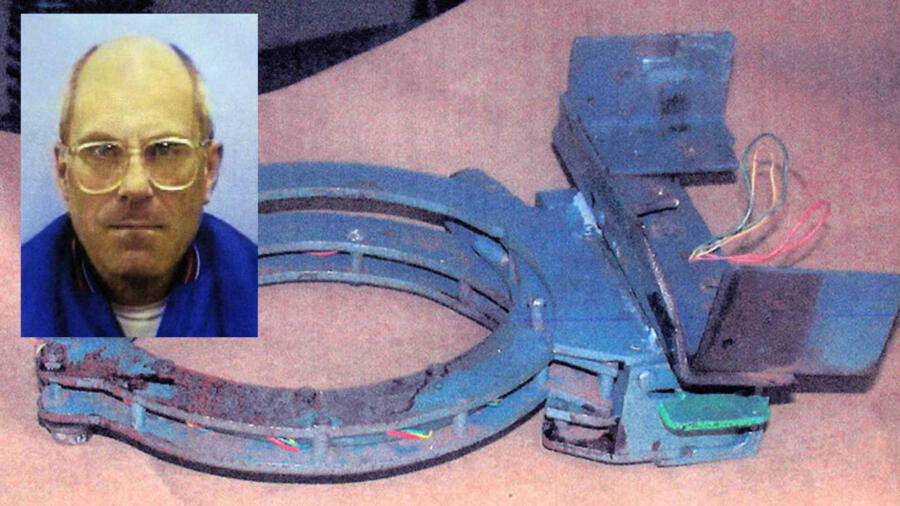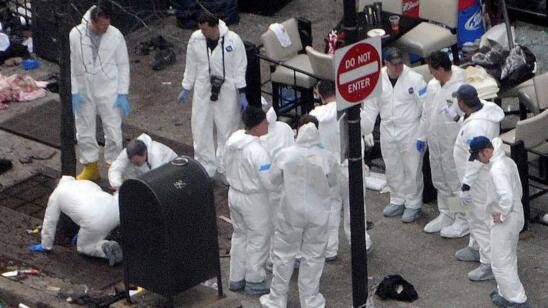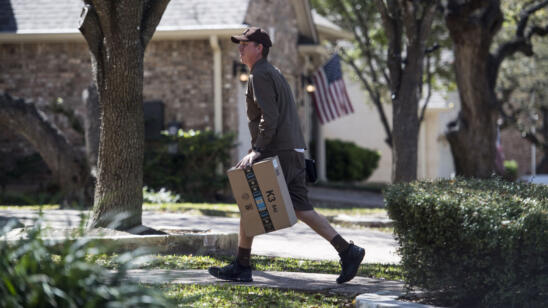It was nothing the bomb squad had ever seen before.
Members of the Erie, Pennsylvania team more typically investigated suspicious packages, but on August 28, 2003, they were called to an extremely unusual scene.
A pizza delivery man named Brian Wells had just robbed a bank, and police had him on the ground a few blocks away. Locked around his neck was a bomb attached to a metal collar. Three minutes before the bomb squad arrived, the device exploded, killing Wells.
After the incident—which later became known as the “collar bomb” or “pizza bomber” case—authorities said Wells had been lured into robbing the bank. Several people ultimately were convicted in the complicated and convoluted crime, including Marjorie Diehl-Armstrong, who helped plot the caper in an apparent attempt to get money to pay a hitman to kill her father.
Arriving just after the device detonated that day 15 years ago was Tom Stankiewicz, an Erie Police lieutenant and commander of the bomb squad. A&E True Crime spoke with Stankiewicz, who retired from the force in 2007 and now runs a private technology company, about how bomb squads operate and what new tools his team started carrying after the Wells case.
Who’s on the Erie bomb squad—do they only handle bomb-related cases or are they regular officers who get called in as needed?
It’s a part-time unit. I was the only full-time member, but everybody else had another job. One of them was a patrol sergeant, one was drug investigator, one was a motorcycle officer, one was a sheriff’s officer and one was a patrolman. On that day, only one was working. Everyone else was off that day.
What’s the average day like?
For me it was a combination of maintaining our equipment, preparing for training or training the guys on the unit. And then it’s a lot of community outreach. I would be giving talks, for example, to businesses or companies about how to handle bomb threats or suspicious packages.
For the part-time members, the average day was going to work and doing something else. Then if we get a call, they immediately leave whatever they’re doing and meet at our response van in the city and then we head to the scene.
What are the most common calls?
Suspicious packages. Someone finds an unattended bag near them or someone gets something mailed to them. The second was military ordnance. You have a lot World War I vets who were up in age and dying, and as family members would go through the house they would come across ordnance. And then you have seasonal things like during the Fourth of July, [where] you can expect someone blowing fingers off their hands or making explosives. We respond to about 50 to 100 calls a year.
What’s the normal protocol?
Move people as far back as you can. Then it’s either going up there ourselves and looking at it, or putting on a bomb suit and going to it. If it’s possible, we’ll send a robot to it, which has a camera on it, to see if we can detonate it. We have tools to X-ray and disassemble devices remotely.
How long does it typically take to clear a scene?
Anywhere from a couple minutes where you go up and realize it’s nothing at all or—depending on what we have to do to figure out what’s inside of it and get rid of it—it could be several hours.
In the Brian Wells incident, was the collar bomb simple or sophisticated?
The device itself was a simple, common device. The case it was put inside of was very unique—the construction and the amount of time that went into building it. And the fact that it attached to someone, that was unique.
It’s been reported that the first 911 call came in that day at 2:38 p.m., the bomb squad was called at 3:04 p.m., the bomb detonated at 3:18 p.m. and squad members arrived at 3:21 p.m. How long does it normally take to get to a scene?
It could range from a couple of minutes to a couple of hours. Our bomb squad responded to 14 counties so some of those could be as far as two hours away just in drive time.
What about that day?
Even if everyone was working that day, that would be considered an average-to-fast response.
How has the bomb squad responded to criticism they didn’t act quickly enough?
It looked like the (patrol officers on the scene) were just waiting, but in reality that was the protocol then and that’s the protocol now. They don’t have the training to deal with an explosive device. They did what they were supposed to do: secure the scene and keep people away and wait for the bomb squad to arrive.
Did the department make any changes in policy afterward?
All we did was clarify to our officers that if it did happen again, to isolate the person, get behind something substantial and get as much information out of them until we arrive.
What if you had gotten there even five minutes earlier?
We didn’t have lock picks with us in the vehicle. (After that) we got lock picks for the vehicle, we trained everyone how to use them. We got a special kind of grinder that would have cut the bolt off the hinge pin and would have disassembled it. It would have been another fast way to get it off someone.
Do you have any regrets about the case?
We did everything we would have done and could have done given the circumstances.
For more stories about what it’s like on a bomb squad, listen to an interview with retired Westchester County Detective Don Gray in Episode 4 of the PD Stories podcast. For more ways to listen, visit the PD Stories page.
Related Features:
A Ret. Bomb Technician Explains Package Bombs and Trip Wires Used in Austin Bombings
Have You Subscribed to Our True Crime Newsletter? Sign Up Now!


